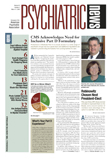Nine academic medical centers around the country are studying the use of lithium to treat bipolar illness in children.
The multisite study is part of an effort by the National Institute of Child Health and Human Development (NICHD) to investigate the effects of more than 25 drugs in children. The project is being funded under the Best Pharmaceuticals for Children Act (BPCA), signed by President Bush in 2002.
“Lithium has been the recognized standard of treatment for adults with bipolar disorder since it was approved in 1970,” said Jay Burke M.D., M.P.H., chair and chief of the Department of Psychiatry at Harvard Medical School, in a statement released by Harvard/Cambridge Alliance.“ But it has never been fully studied for safety and efficacy in children. As a result, child psychiatrists have been reluctant to use it and may not have used it as effectively as we suspect it can be used.”
Harvard/Cambridge Health Alliance is one of the sites being funded under the NICHD contract. A teaching affiliate of Harvard Medical School, Cambridge Health Alliance is a regional health care system with hospitals and primary care practices in the Boston area.
Perdita Taylor-Zapata, M.D., NICHD project officer for the contract, told Psychiatric News that the other sites involved in the lithium study are Case Western Reserve University, Children's Hospital and Regional Center in Seattle, Cincinnati Children's Hospital Medical Center, Medical College of Wisconsin, North Shore Long Island Jewish Research Institute in New York, University of Illinois at Chicago, University of North Carolina School of Medicine, and Stanford University School of Medicine.
Taylor-Zapata said the NICHD study will assess use of lithium in children aged 7 to 17 who have been diagnosed with mania.
Lithium is one of a number of “off-patent” drugs—meaning the patents have expired, and pharmaceutical companies are no longer conducting studies—that NICHD lists as study priorities.
Also on that list is lorazepam for sedation of children in the intensive care unit.
As of March 2004, four on-patent drugs had been listed for study. These are morphine, bupropion, sevelamer (used to reduce the level of phosphorus in the blood of patients with end-stage renal disease), and zonisamide (used to treat seizures). Taylor-Zapata said the list is updated every year by NICHD in collaboration with the Food and Drug Administration (FDA).
According to information about BPCA on the NICHD Web site, several practical problems have discouraged the testing of drugs in pediatric populations. These include ethical issues around parental permission and the child's assent; availability of technology to monitor patients and assay very small amounts of blood; lack of incentives for pharmaceutical companies to study drugs in neonates, infants, and children; and lack of suitable infrastructure for conducting pediatric pharmacology research.
In 1994 the FDA issued its Pediatric Rule, which allowed the labeling of drugs for pediatric use based on extrapolation of efficacy in adults, if the course of the disease and the response to the drug are similar in children as in adults.
Additional legislation passed in 1997 provided extra incentives to pharmaceutical companies for pediatric testing, including an additional six-month exclusivity period for marketing the drug.
The purpose of the BPCA is to establish a process for studying on-patent and off-patent drugs for use in pediatric populations and improve pediatric therapeutics through collaboration on scientific investigation, clinical study design, weight of evidence, and ethical and labeling issues.
“Our goal is primarily to get safety and dosing information on drugs that are routinely used in children but for which there are no guidelines on appropriate use,” Taylor-Zapata said.
More information about the NICHD and the BPCA is posted at<www.nichd.nih.gov/bpca/action.cfm>.▪
